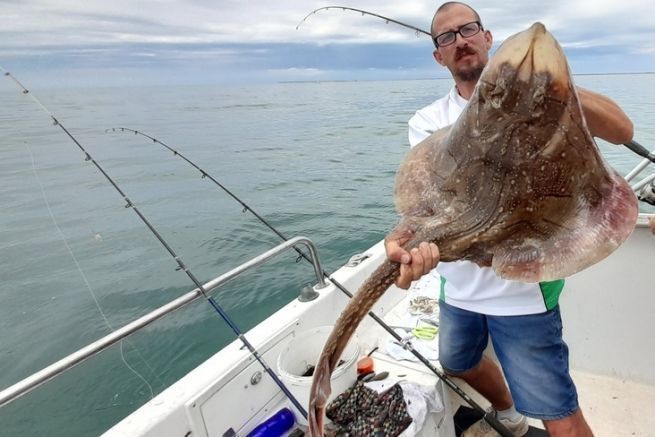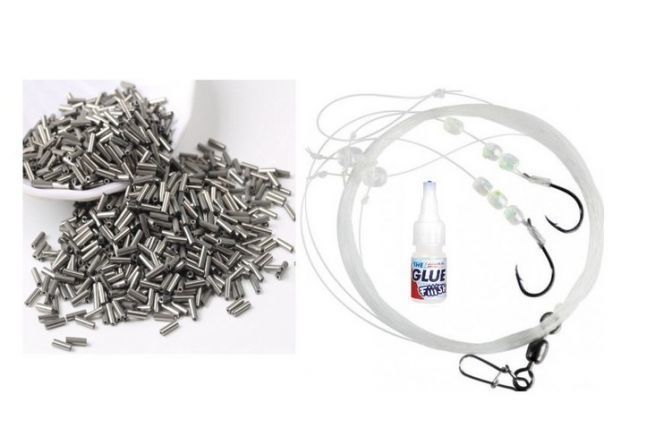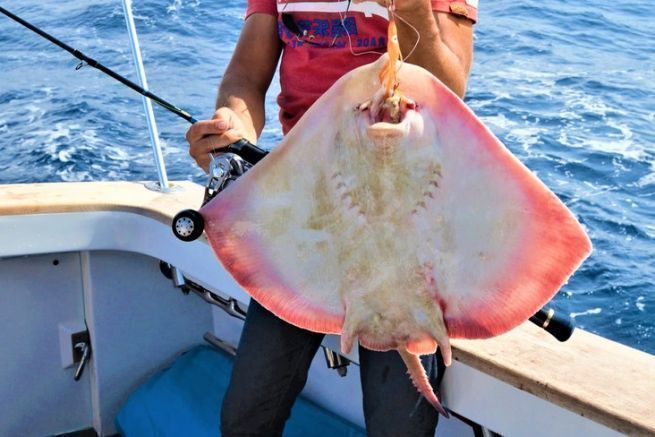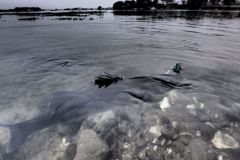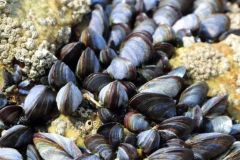The ray, a fascinating fish
Light, graceful and majestic, blending in with the color of the sand and shells, the ray moves slowly, undulating its pectoral fins, resembling wings.
This cartilaginous fish is characterized by a flattened body. It is distinguished from flat and bony fish (such as sole or plaice) by a dorso-ventral flattening resting on the ventral region. Its solid fins of its body form, according to the species, form an oval, round, triangular or wedge-shaped disc.
The mouth of the curly ray is on the ventral side and presents an upper jaw with a strong dentition. It is to note that its teeth are flattened in the female and pointed in the male. As an adult, it has curved spines on its back and tail that make it easily recognizable.
The ray is fished all year round and more particularly in summer. It is a nocturnal species that rests during the day. At night, the voracious ray spends most of its time searching the sea bed for fish and shellfish, gastropods, clams, oysters and other crustaceans whose shells it crushes thanks to its solid cobblestone dentition.
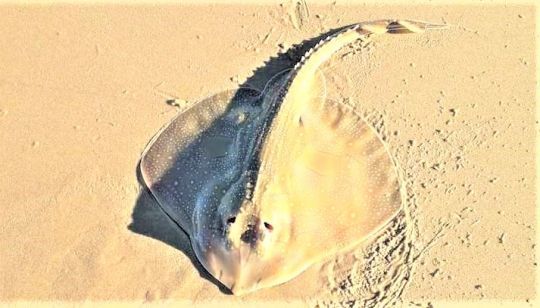
Where to fish for rays?
With a cosmopolitan distribution, the ray usually prefers tropical and subtropical marine environments even if it is not rare to find it in temperate and cold waters. In short, it can be found in all seas and oceans!
On the French coasts, in the North Atlantic and in the Mediterranean, we meet more than 20 species of rays (among several hundred other species present throughout the world).
The curly ray is the most prized for its fine flesh. We also find the marbled torpedo capable of producing electric discharges which it uses to hunt and which can exceed 200 volts, the bags gray and black, the eagle and the angel fish, the brown, starry, smooth, flowery, radiated, circular, mixed ray, etc.
The most feared is undoubtedly the stingray which is venomous. Its caudal spur inflicts an atrocious wound sometimes fatal for the man. Like most rays, it buries itself on the bottom and flush with the sand and mud: you must therefore be careful not to step on them to avoid any unpleasant surprises!
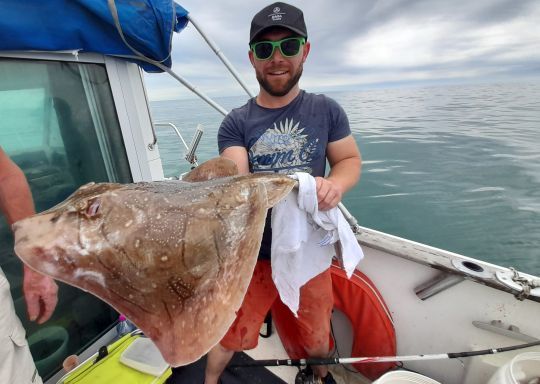
Protected rays
The species is endangered, its fishing in France is highly regulated. A ban on recreational fishing of the brown skate (Raja undulata ) has come into force. This prohibition of recreational fishing for the brown skate is intended to guarantee the management and conservation measures adopted by European regulations.
This decree of April 29 was published in the official journal on May 9, 2015 and regulates the recreational fishing of the brown skate (Raja undulata ). No changes are planned at this time for recreational fishing. The decree therefore remains valid despite a decree of January 28, 2020 of the European Commission that allows its fishing again.
Do not confuse the curly ray and the brown ray
The difference is noticeable. The curly ray has many points on its back, different from the convolutions of the brown ray. Moreover, the tail of the curly ray is striped which is not the case of its colleague.
Under recent European measures, fishing for brown skate has been reauthorized for French professional fishermen, but not for recreational fishermen. In fact, its fishing is not prohibited, but the conservation of the fish is.
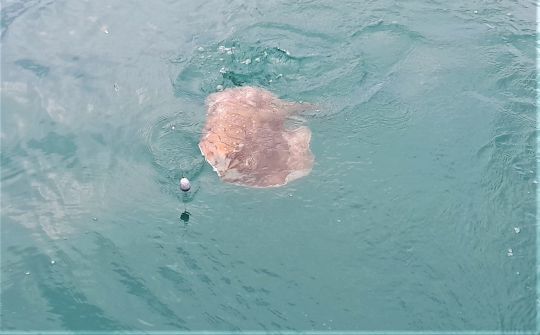
What techniques to fish for skate?
The ray is fished to support, to pose, in drift with the sharp and mainly with surfcasting.
To choose your favorite baits, choose a bulky one. Sardine, herring, mackerel, pout, squid, crab or squid, as well as a nice bite of worms and shellfish meat are to his taste.
Rays can be found on beaches, sandbanks, rocky or gravelly bottoms, offshore, on the coast, in estuaries and channels. Prefer calm waters, a sea that is not very agitated with no or medium currents and small coefficients below 60.
If you don't get a bite, let the fish bait long enough to avoid missing it or biting it through the nose. Even with a large strike, the feeling of fighting a striper is amazing. You will feel few sharp head strikes, but they will be of great amplitude and quite slow. The ray has a tendency to make traverses, but at a moderate speed. It moves all in power by taking advantage of its broad body to take support on water. A real tractor!
With a beautiful specimen, the hardest thing is to take it off the bottom, because this fish will do everything to stay there. It will be then necessary to apply a maximum tension to him with short pumpings. During the fight, the large surface of the body of the ray opposes a considerable resistance to the recovery which comes to add to the power of its wings. Every centimeter gained will require a lot of effort and to take out a big ray in deep fisheries can be long e t tiring.


